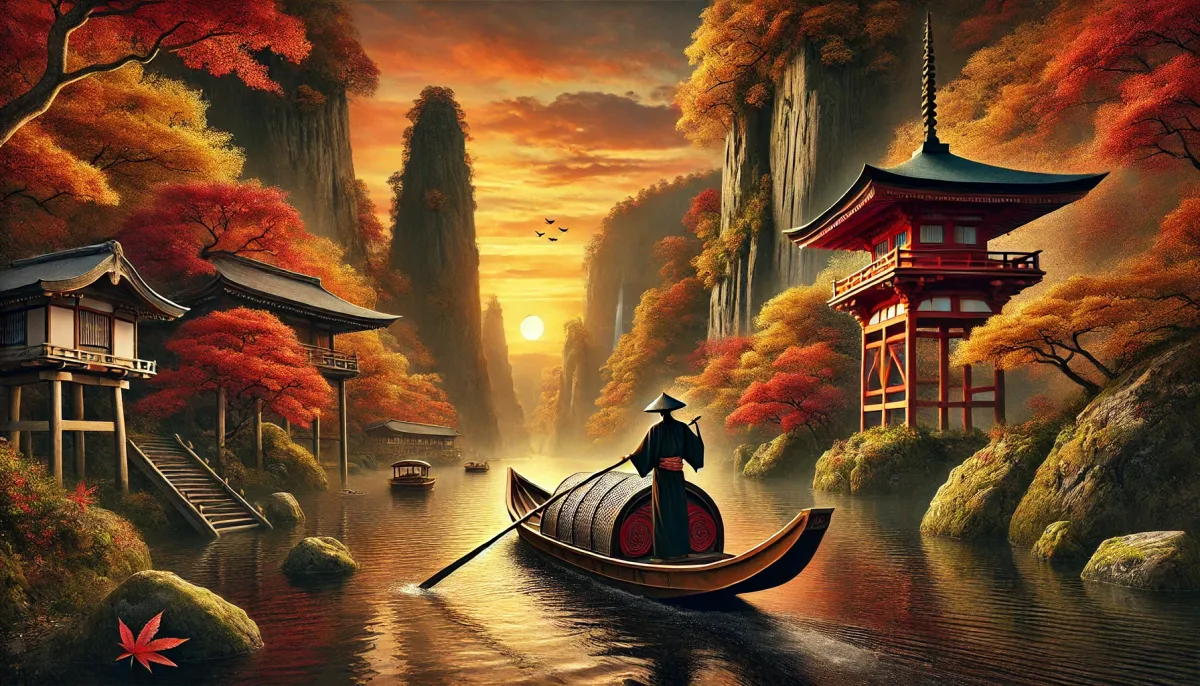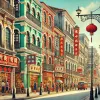Japan, a land of captivating beauty, is even more enchanting during the fall. As an avid traveler, I've explored many Asian cities, but Tohoku's autumn foliage holds a special place in my heart. This region offers a unique blend of natural splendor, historical charm, and cultural experiences, making it a must-visit for any traveler. Join me as I recount my unforgettable journey through Iwate Prefecture, the final chapter of my Tohoku adventure.
Cruising Down the Nippori River: An Enchanting Experience
Forget the typical boat tours; the Nippori River cruise in Iwate offers a truly immersive Japanese experience. Unlike the boat rides on Lake Tazawa or Lake Towada, this cruise is steeped in traditional charm. The boatman, dressed in authentic Japanese attire, skillfully propels the boat with a long pole, narrating the journey along the way.
The scenery is breathtaking. Towering cliffs, some reaching heights of over a hundred meters, flank the river. The vibrant hues of autumn leaves paint the cliffs in a tapestry of red, orange, and gold. On a clear day, the azure sky and fluffy white clouds create a stunning backdrop, seemingly emerging from the mist-shrouded cliffs.
Midway through the cruise, you disembark and venture into the heart of the gorge, home to the iconic Geibikei Rock. This imposing rock formation, standing at over 120 meters tall, is crowned by a distinctive lion's nose, giving it its name (Geibi means "lion's nose").
A fun activity awaits at the base of the rock: small stalls sell stones inscribed with the characters for "fortune" and "wealth." The challenge? Toss your stone into a small cave high up on the rock face. Success is said to grant your wish, and the vendor rewards you with a commemorative certificate. It’s a charming, uniquely Japanese experience.
But the true highlight of the cruise is the boatman's enchanting rendition of traditional boat songs during the return journey. Each boat has its own melody, creating a harmonious symphony that echoes through the valley. It's a magical moment, a true immersion into the heart of Japanese culture.
Stepping Back in Time: Exploring the Ancient Temples of Chūson-ji and Mōtsū-ji
Tohoku is a region steeped in history, and no trip is complete without a visit to its cultural gems. I highly recommend Chūson-ji and Mōtsū-ji, two UNESCO World Heritage sites with over a thousand years of history. Founded by the priest Ennin in 850 AD, these temples offer a captivating glimpse into Japan's rich past.
Even if history isn't your primary interest, the beauty of these temples is undeniable. The temple grounds are adorned with vibrant autumn foliage, creating a picturesque setting. Whether you're a history buff or a photography enthusiast, these temples offer ample opportunities to capture stunning images of ancient architecture against a backdrop of natural beauty.
If you visit Chūson-ji this year, make sure to enter Konjiki-dō (Golden Hall), even though it requires a separate entrance fee (around 1,000 yen). 2024 marks the 900th anniversary of its construction, making it a particularly special time to visit. The hall's exterior might seem unassuming, but the interior is a spectacle of gold leaf, mother-of-pearl, and other precious materials, showcasing the exquisite craftsmanship of the era. I was fortunate enough to visit in the summer and acquire a limited-edition goshuin (temple stamp) commemorating the anniversary—a truly precious souvenir.
Beyond Konjiki-dō, Chūson-ji comprises several other temples and offers a variety of omamori (protective charms). I acquired one for financial luck and a special limited-edition eye charm available only on the 8th of each month.
Adjacent to Chūson-ji is Mōtsū-ji, also a World Heritage site. While equally historic, Mōtsū-ji offers a different aesthetic. Reflecting the Buddhist concept of "Pure Land," the temple features serene water gardens, where the vibrant autumn leaves create stunning reflections on the lake's surface. The temple grounds offer a tranquil escape, a place to find peace and connect with nature. Of course, I couldn't resist buying another omamori here—a charming charm for beauty.
Indulging in Culinary Delights: Savoring Maezawa Beef
After a day of exploring temples and scenic landscapes, it's time to indulge in Iwate's culinary delights. Iwate is home to Maezawa beef, one of Japan's top three Wagyu brands. I highly recommend Maezawa Beef Higashimise, a restaurant that also operates a butcher shop. The sight of the marbled cuts of meat is enough to make your mouth water.
The must-try dish is the yakiniku set, priced around 5,000 yen. This set offers a variety of cuts, including sashimi, chuck rib, and sirloin steak. The presentation is a feast for the eyes, the meat artfully arranged on a platter.
The key to enjoying Maezawa beef is to savor its natural flavors. The restaurant recommends cooking the meat to about medium-rare, just until the surface is seared. The result is a melt-in-your-mouth experience, the perfect balance of tenderness, richness, and flavor.
A Tranquil Retreat: World Heritage Resort Shizukuishi Fruit Village
For a luxurious stay, I recommend the World Heritage Resort Shizukuishi Fruit Village. This intimate resort offers only 37 rooms and boasts unique amenities, including fruit picking during spring, summer, and autumn. During my visit, I enjoyed picking sweet persimmons, a quintessential autumn treat in Japan.
The resort offers a variety of rooms, including twin and triple rooms, some with private hinoki cypress wood onsen (hot spring baths). The resort also features a separate onsen facility, Yama-zakura no Yu, with 17 different hot spring baths. It's the perfect way to unwind after a day of exploration.
My Tohoku Adventure Concludes: A Journey for the Senses
My journey through Tohoku, culminating in Iwate, was a feast for the senses. From the vibrant autumn foliage to the serene temples and the exquisite cuisine, this region offers a unique and unforgettable travel experience. I encourage every traveler to explore this hidden gem and discover the magic of Tohoku for themselves.







